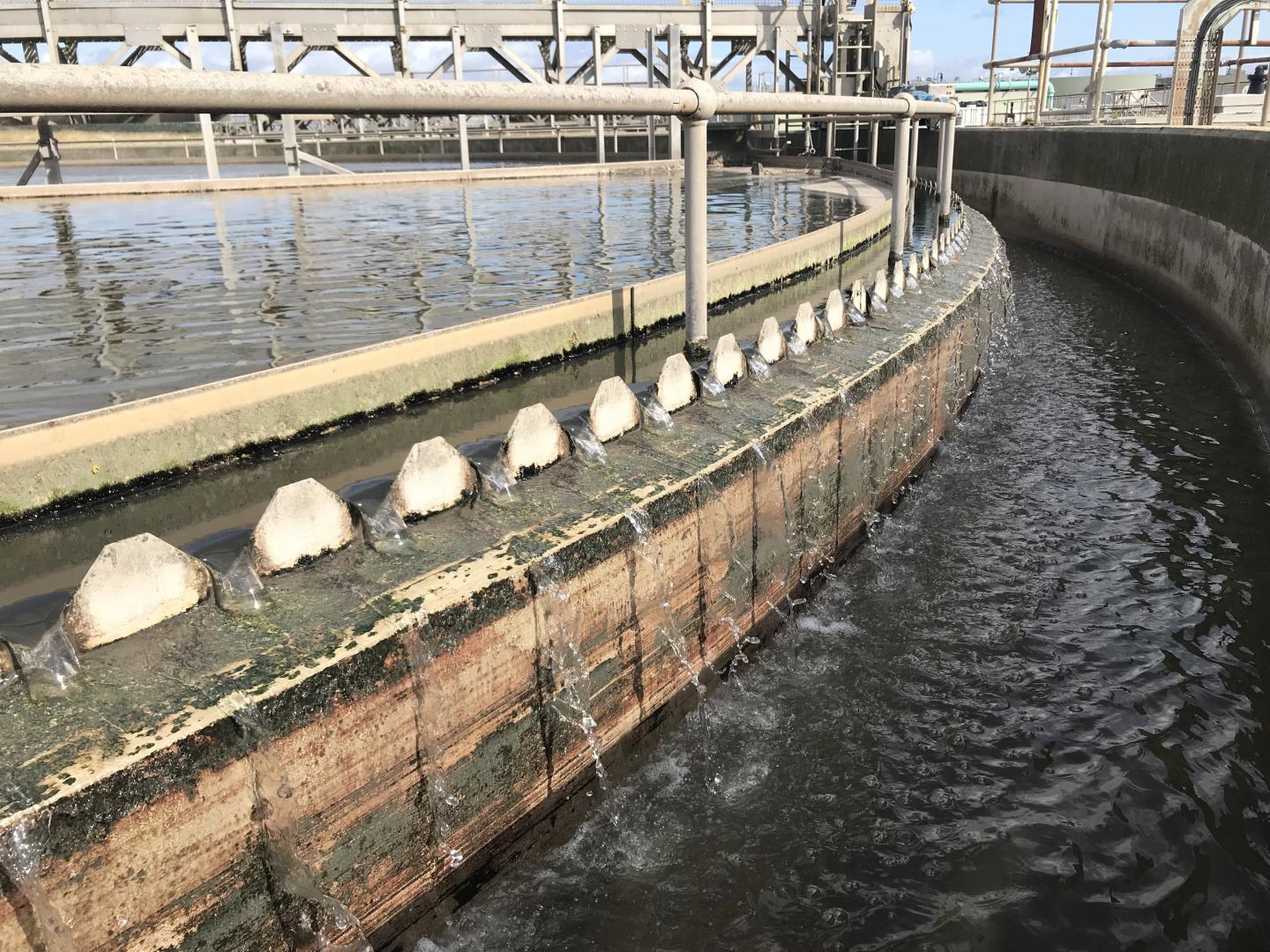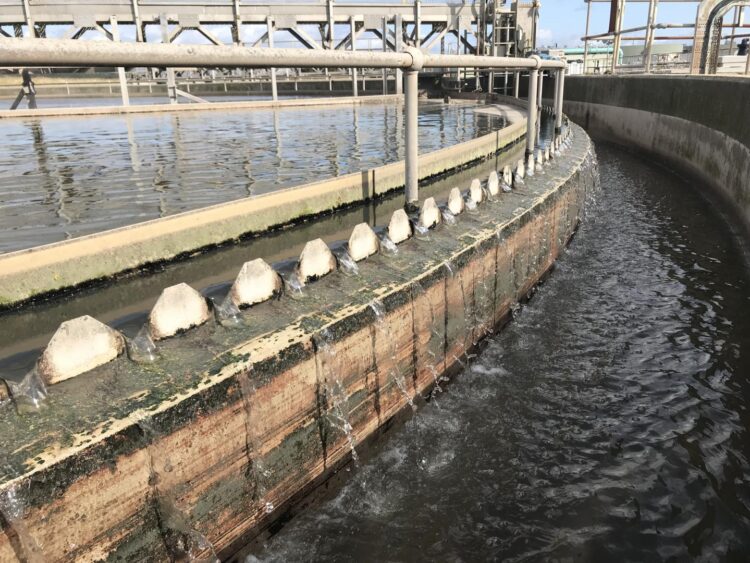Sewage surveillance could effectively become ‘canary in the coal mine’ for COVID-19 and other emerging infectious diseases

Credit: UKCEH
Scientists will develop a standardised UK-wide system for detecting coronavirus in wastewater, in order to provide an early warning of future outbreaks and reduce reliance on costly testing of large populations.
The majority of people infected with SARS-CoV-2 – the virus that causes the COVID-19 disease – are believed to shed the virus in their faeces, even if they are asymptomatic, so sewage surveillance is widely seen as a promising way of identifying future disease hotspots.
The new £1m research programme will see experts develop sampling, testing and scientific modelling methods that will be adopted by government agencies and scientists across the UK. The work will inform the UK national surveillance programmes recently announced by Defra and the Scottish and Welsh Governments.
The researchers will also determine whether there is a possibility for SARS-CoV-2 in wastewater and sludge to be infectious, and how environmental factors such as sunlight and temperature reduce infectivity. This will enable them to confirm that current guidance is protective of workers at sewage plants, and also assess the risk to people and animals as a result of treated and untreated sewage discharge in rivers and seas.
The research programme, which is now under way and will last until October 2021, is being led by the UK Centre for Ecology & Hydrology (UKCEH). It also involves researchers from the universities of Bangor, Bath, Edinburgh, Cranfield, Lancaster, Newcastle, Oxford and Sheffield, plus the London School of Hygiene & Tropical Medicine.
Dr Andrew Singer of UKCEH, principal investigator of the new National COVID-19 Wastewater Epidemiology Surveillance Programme (N-WESP), says: “Several studies have shown that the RNA of SARS-CoV-2 – the genetic material of the virus – can be detected in wastewater ahead of local hospital admissions, which means wastewater could effectively become the ‘canary in the coal mine’ for COVID-19 and other emerging infectious diseases.
“The research will be centred on wastewater-based epidemiology – the concept is based on analysis of wastewater for markers of infectious disease, illicit drugs or pharmaceuticals in order to better inform public health decisions.
“By sampling wastewater at different parts of the sewerage network, we can gradually narrow an outbreak down to smaller geographical areas, enabling public health officials to quickly target interventions in those areas at greatest risk of spreading the infection.”
Wastewater could become the ‘canary in the coal mine’ for COVID-19 – Dr Andrew Singer
Professor Barbara Kasprzyk-Hordern of the University of Bath, one of the programme’s co-investigators, explains: “Wastewater-based epidemiology offers a promising method for monitoring a pandemic, particularly for infectious diseases such as COVID-19 where asymptomatic cases play a significant role in transmitting the virus.
“Given the financial and logistical challenges of testing large numbers of people, and then trying to isolate those infected, this represents a potentially low-cost, anonymous and immediate mechanism for predicting local outbreaks and helping to contain the spread of infection.”
The researchers will also work with Defra, environment agencies, public health bodies and water companies across the UK. They will undertake sampling of wastewater at several major cities as part of their study.
Professor Gideon Henderson, Defra Chief Scientific Adviser, says: “It is heartening to see the scientific community continuing to combat coronavirus through this project, alongside the government.
“We are already working with researchers, water companies and devolved governments in Scotland, Wales and NI to monitor for fragments of coronavirus genetic material in wastewater in the hope that it will help us detect new outbreaks.
“Though the science is still in its infancy, this new project will help us to develop the methods that we are applying.”
The research programme is funded by the Natural Environment Research Council (NERC), as part of UK Research and Innovation’s rapid response to COVID-19.
###
Notes to editors
1. N-WESP will build on pilot sewage surveillance projects already under way in the UK as well as link up with other researchers working in the field, including a new Defra-funded Imperial College-led programme into infectivity of COVID-19. Its methods for sampling, analysing and data reporting will be harmonised with those used by the Joint Biosecurity Centre Surveillance Network, led by Defra.
The team will also work with scientists in other countries, including Spain and the Netherlands, where there is already an established surveillance system to track the spread of the SARS-CoV-2 virus in sewage.
https:/
2. The researchers are sampling wastewater for ribonucleic acid (RNA) because it carries the genetic information of the coronavirus. Along with DNA and proteins, RNA is one of the three major biological macromolecules that are essential for all known forms of life. The viral RNA is reproduced in the infected cell along with the rest of the viral structures to create additional virus which can infect additional cells and people.
For media enquiries
For interviews and further information, please contact Simon Williams, Media Relations Officer at UKCEH, via [email protected] or +44 (0)7920 295384.
About the UK Centre for Ecology & Hydrology (UKCEH)
The UK Centre for Ecology & Hydrology is a centre for excellence in environmental science across water, land and air. Our 500 scientists work to understand the environment, how it sustains life and the human impact on it – so that together, people and nature can prosper.
We have a long history of investigating, monitoring and modelling environmental change, and our science makes a positive difference in the world. The issues our science addresses include: air pollution, biodiversity, biosecurity, chemical risks, extreme weather events, droughts, floods, greenhouse gas emissions, land use, soil health, sustainable agriculture, sustainable ecosystems, sustainable macronutrient use, and water resources management.
The UK Centre for Ecology & Hydrology is a strategic delivery partner for the Natural Environment Research Council, part of UK Research and Innovation. http://www.
Media Contact
Simon Williams
[email protected]





